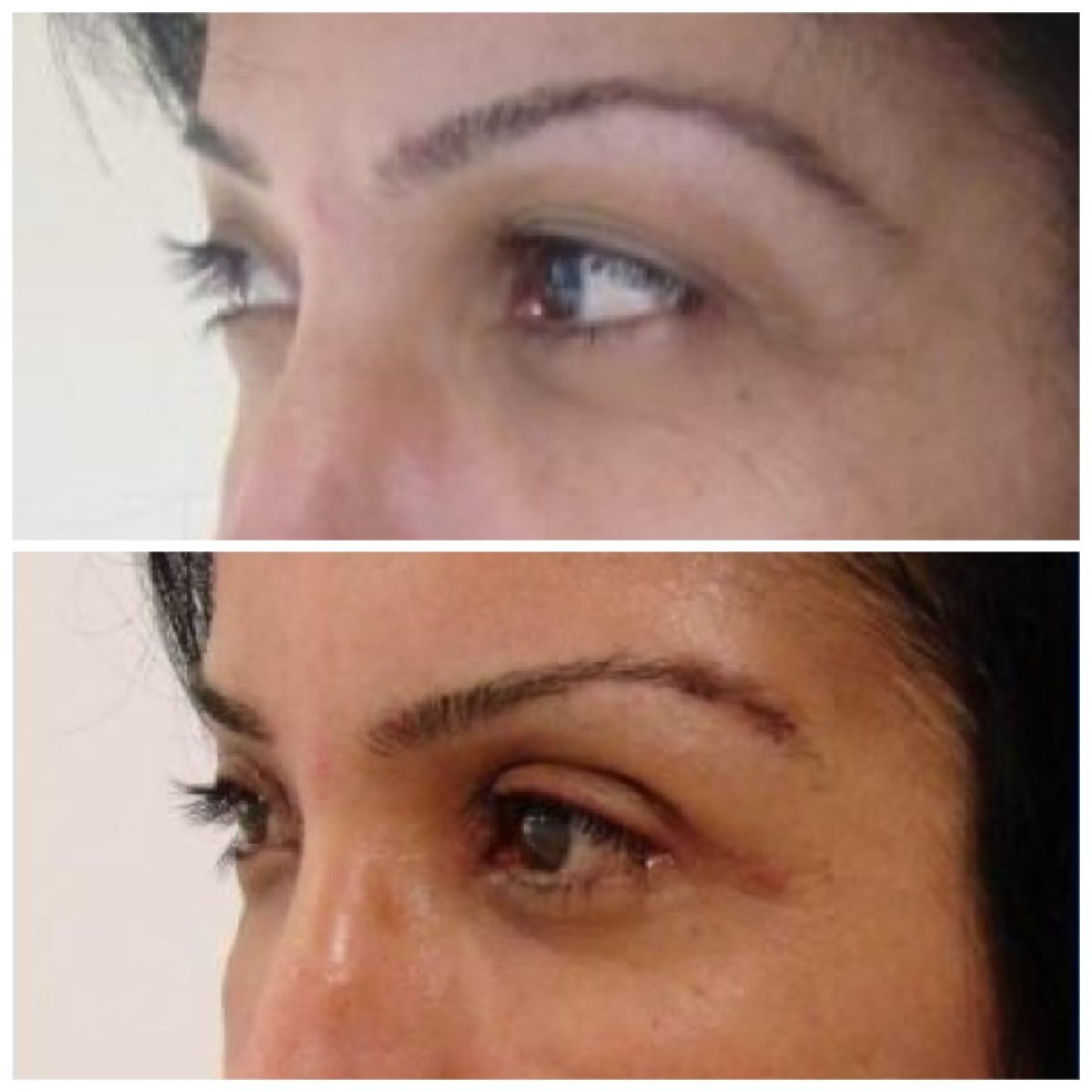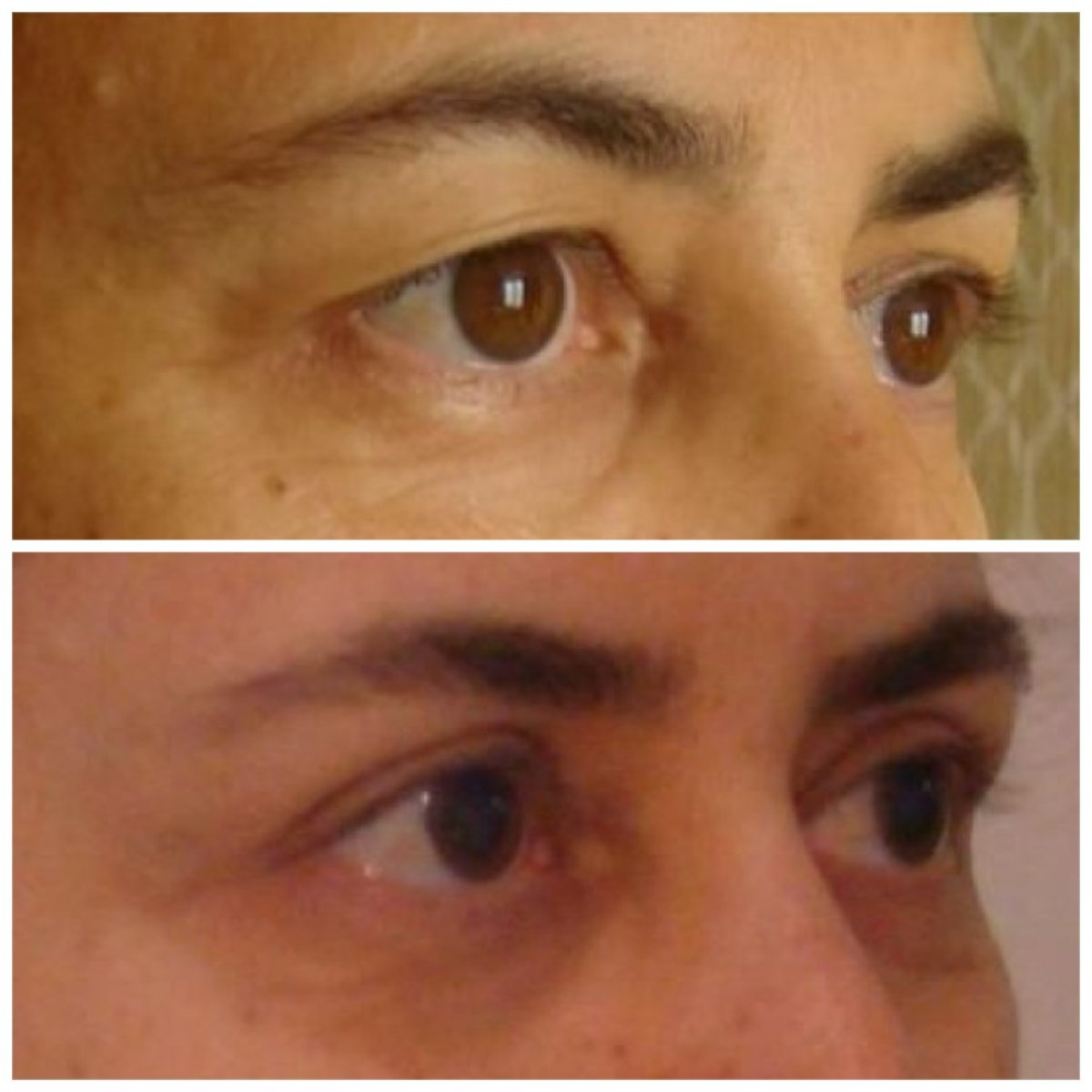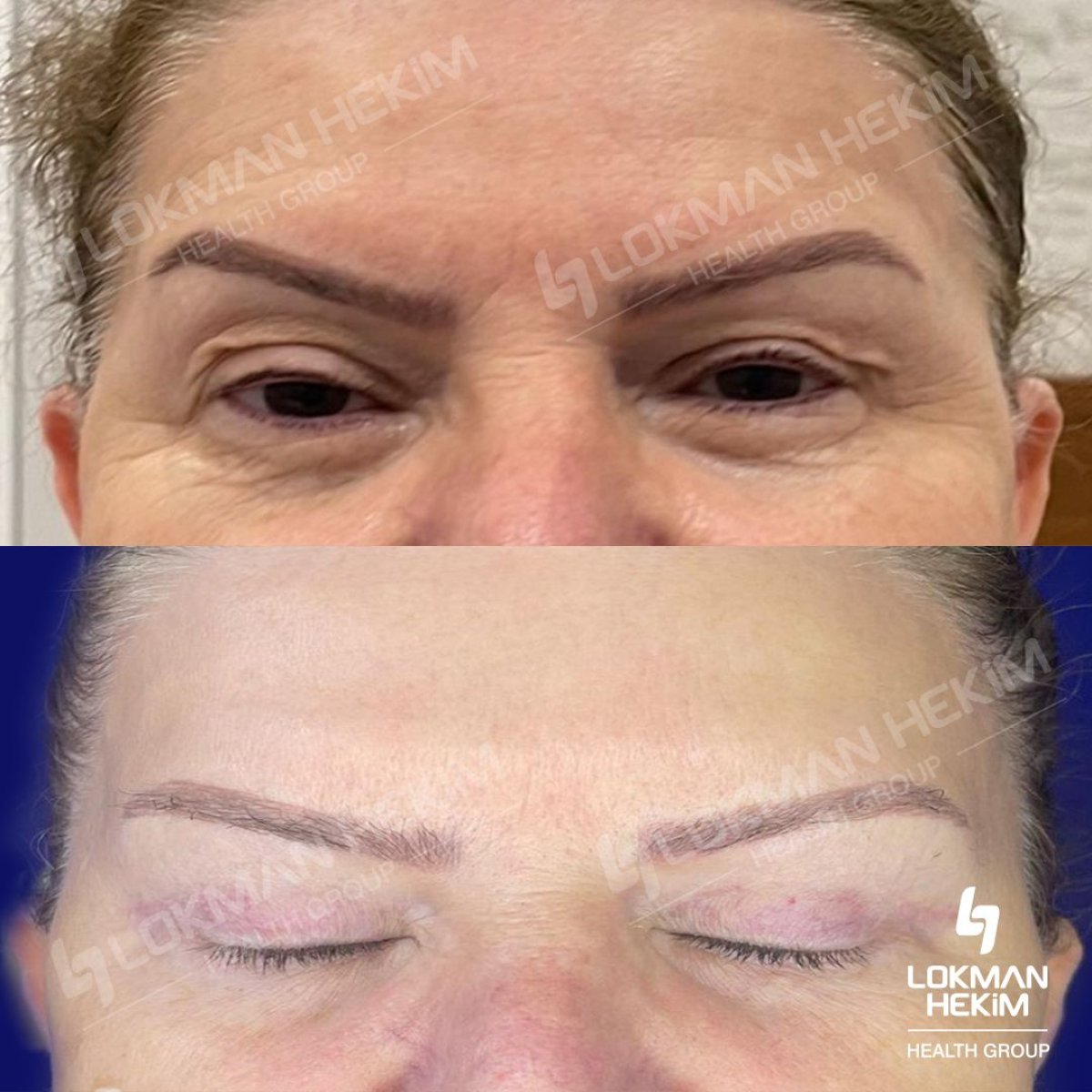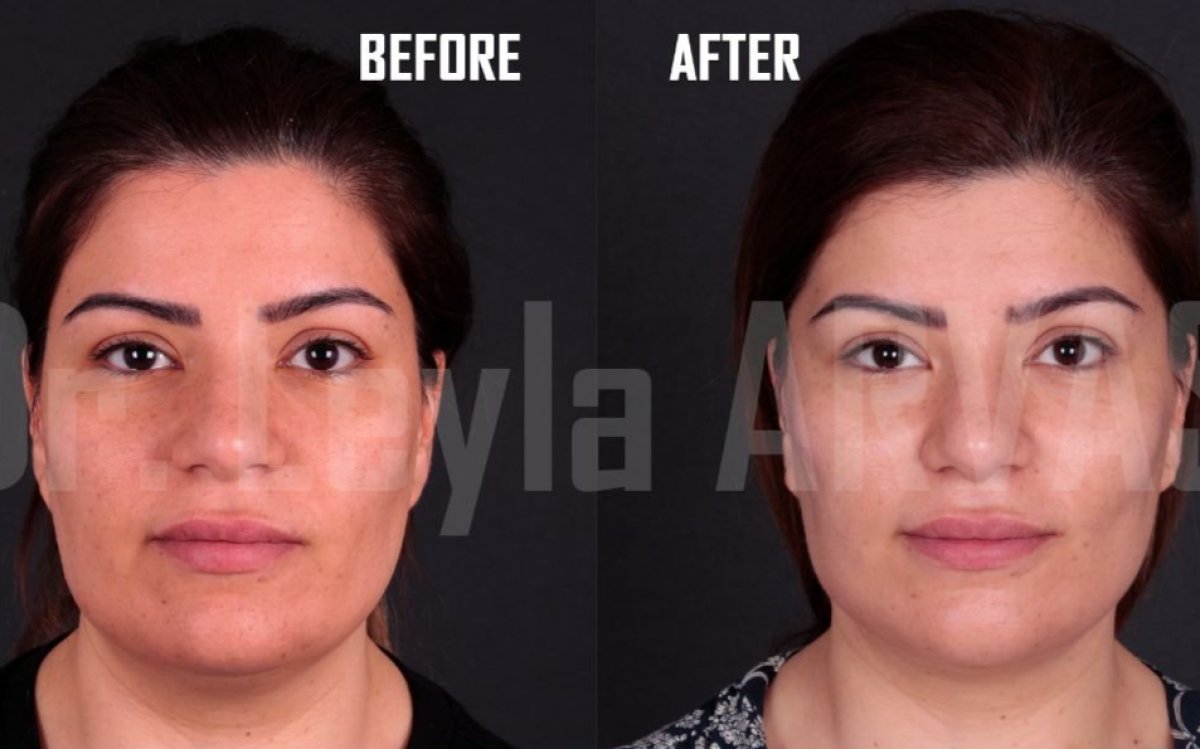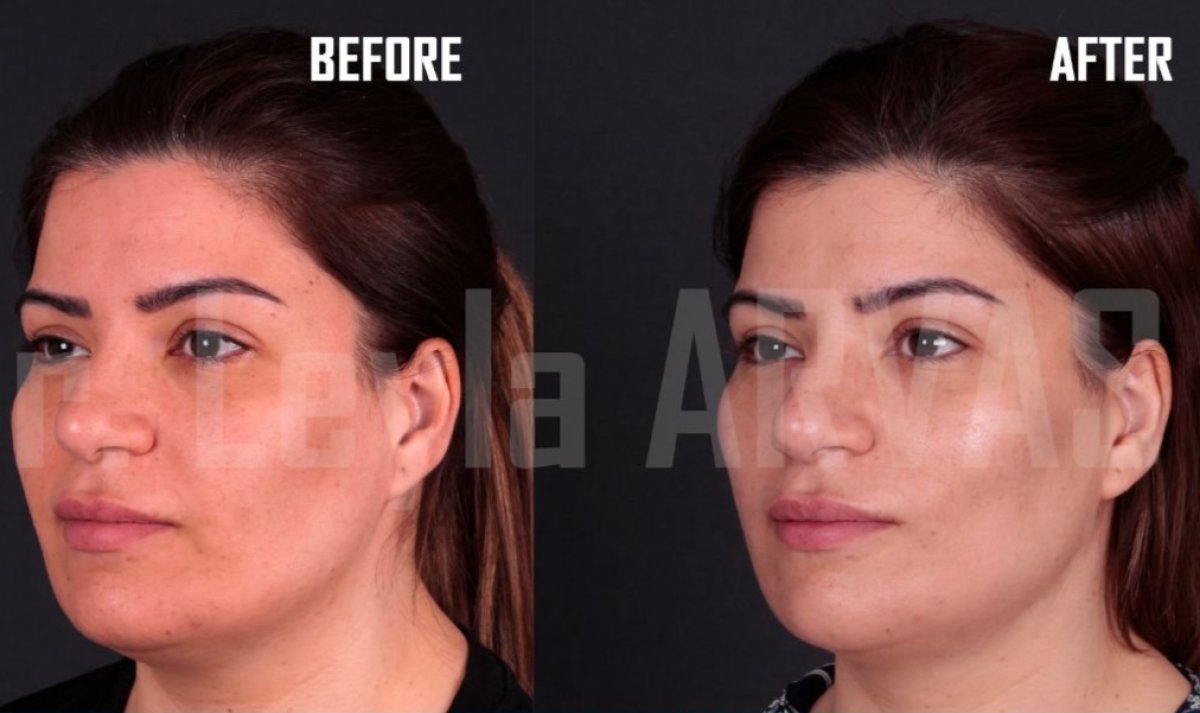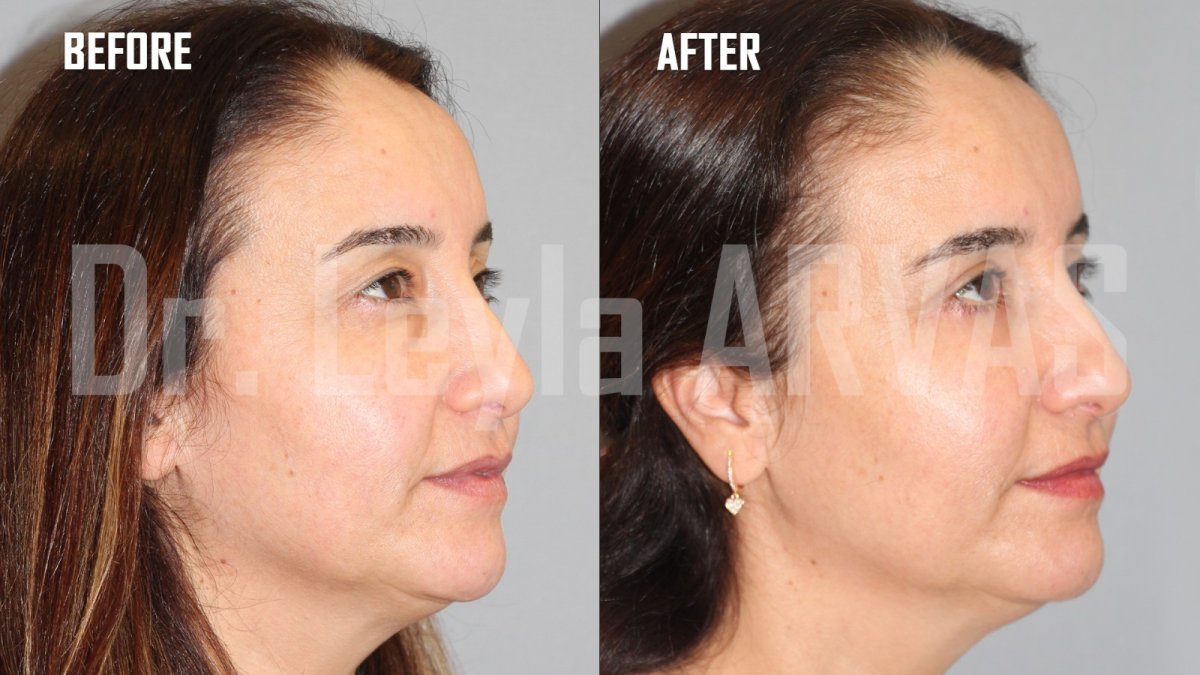What Is Blepharoplasty Surgery?
Blepharoplasty, or eyelid surgery, is a cosmetic procedure that removes excess skin and fat from the eyelids to achieve a younger and fresher appearance. According to the International Society of Aesthetic Plastic Surgery (ISAPS) 2024 Global Survey, blepharoplasty became the world's most-performed cosmetic surgery with 2.12 million procedures, representing a 13.4% increase year-over-year.
The blepharoplasty procedure can be performed on the upper eyelids, lower eyelids, or both. Additionally, this surgical intervention can improve vision when sagging eyelids obstruct sight, making it both a cosmetic and functional treatment option.
Who is it for?
- Patients with sagging eyelids or under-eye bags
- Those seeking long-term eyelid fat removal surgery
- People with extra skin above the eyelid obstructing vision
- Anyone looking for a natural eye lift
A study shows that upper eyelid blepharoplasty boosts confidence, enhances social interactions, and increases overall facial satisfaction.
What Are The Types of Eyelid Surgery?
The classical method works best for severe sagging, laser techniques offer minimal scarring, ultrasound provides gentle fat removal, and non-surgical methods suit early signs of aging.
Classical techniques
The traditional method uses a scalpel to remove extra skin and fat, making it a more invasive surgical procedure primarily for upper and lower blepharoplasty. Stitches are required, and recovery typically takes about 1–2 weeks.
- Upper eyelid surgery – Removes excess skin and fat to improve vision and appearance.
- Lower blepharoplasty – Focuses on under-eye fat removal to reduce puffiness.
- Epicanthoplasty – Corrects inner eye folds to improve eye shape symmetry.
Newer techniques
Modern techniques in eyelid surgery offer natural-looking results with minimal scarring. These advanced methods are specifically designed to provide enhanced outcomes for those seeking cosmetic eyelid enhancements.
- Laser blepharoplasty – A high-precision option that uses laser technology instead of a scalpel, reducing bleeding and scarring.
- Ultrasound-assisted blepharoplasty – This procedure uses sound waves to break down fat before removal, making the process gentler and reducing post-operative swelling.
- Vibration-assisted technique – Helps redistribute fat smoothly while reducing patient discomfort and bruising.
Minimally invasive alternatives
These options provide subtle lifting effects without requiring surgical intervention.
- Plasma pen treatments – Uses plasma energy to tighten and lift skin without surgery.
- Fillers – Add volume and improve contours for a youthful appearance, no surgery needed.
- Radiofrequency skin tightening – Stimulates collagen production to tighten skin, lift and rejuvenate without incisions or downtime.
Blepharoplasty stands out as the optimal choice for long-term eyelid rejuvenation. While non-surgical treatments like CO2 lasers (80–90% satisfaction), plasma exeresis (85–95%), and fillers (70–85%) offer quicker recovery, their results last only months.
How Does Blepharoplasty Compare to Other Eye Rejuvenation Procedures?
Patients often compare blepharoplasty with minimally invasive treatments. While all these options help rejuvenate the eye area, they differ significantly in terms of invasiveness, longevity, and recovery time.
| Procedure | Invasiveness | Longevity | Recovery time |
| Blepharoplasty | Surgical | permanent (10–15 years) | 1–2 weeks |
|---|---|---|---|
| Laser eye bag removal | Minimally invasive | 5–7 years | 1–2 weeks |
| Fillers for eye bags | Non-surgical | 6–12 months | 24–48 hours |
| Plasma pen treatments | Non-surgical | 1–2 years | 24–48 hours |
| Radiofrequency skin tightening | Non-surgical | 1–2 years | 1–3 days |
If you prioritize minimal recovery time, non-surgical options like plasma pen treatments and radiofrequency skin tightening may be suitable. However, the results are temporary compared to surgical blepharoplasty.
Who Is a Suitable Candidate for Eyelid Surgery?
Candidates for eye lift surgery are those who:
- Have sagging upper eyelids or puffy under-eye bags
- Experience vision obstruction due to excess skin above the eyelid
- Want long-term solutions, not temporary fixes like fillers
- Are in good health with no severe eye conditions
Patients with chronic dry eyes, active infections, or uncontrolled medical conditions may not be suitable candidates for this procedure.
How Is the Surgery Performed?
If you're considering the procedure, here's what the surgery involves and how to care for yourself afterward.
Pre-surgery preparations
- Consult with an eye lift surgeon to assess candidacy and discuss expectations.
- Complete pre-operative medical tests, including blood work and eye examinations.
- Avoid exercise after eyelid surgery or strenuous activities for at least 2 weeks post-operatively.
How long does eyelid surgery take? The procedure typically lasts 1–2 hours under local or general anesthesia.
Surgery steps
Upper blepharoplasty involves precise incisions placed in the natural eyelid crease, typically 8–10 mm from the lash line. The surgeon conservatively removes excess skin (usually a 3–5 mm strip) and selectively addresses fat pads through removal or repositioning. Modern muscle-sparing techniques help reduce dry eye complications.
- Consultation & Pre-operative Tests – Includes vision tests, blood work, and detailed discussion with your plastic surgeon.
- Incisions – Hidden in natural eyelid creases or inside the lower lid.
- Eyelid Fat Removal Surgery – Excess skin and fat are removed or repositioned.
- Closure & Recovery – Sutures dissolve over time or are removed after a week.
Recovery timeline
Recovery follows predictable milestones: swelling peaks within 48–72 hours, patients feel socially comfortable within 2–3 weeks, 70% of healing is complete by 6 weeks, and 90% of final results are visible at 3 months. Most patients return to work within 10–14 days, with full recovery taking 4–6 weeks.
- Swelling peaks at 48–72 hours and subsides within 2 weeks
- Stitches removed (if needed) after 5–7 days
- Final results visible in 2–3 months
Recovery and Blepharoplasty Healing
Blepharoplasty healing time varies, but most patients can return to their daily activities in 10–14 days. The initial recovery period often takes place in a surgical facility to ensure proper care and monitoring.
A patient from Ukraine treated by Dr. Murat Yaman at Lokman Hekim Istanbul Hospital noted: "I travelled alone, but I didn't feel lonely, I had support from all sides. Murat Yaman is a professional and did everything to the maximum." (Bookimed verified review, 5.0/5 rating)
Eyelid surgery recovery tips
- Use cold compresses for swelling reduction
- Sleep with head elevated
- Avoid makeup and contact lenses for at least 10 days
- Avoid eye strain (screens, reading)
- Wear sunglasses outdoors to protect healing skin
- Follow the blepharoplasty experience instructions from your surgeon
Full results are visible after 2–3 months when swelling completely subsides.
Risks and Complications of Eyelid Correction Surgery
Eye rejuvenation surgery, like any surgical procedure, carries certain risks. Most patients recover without issues, but it's important to understand the potential side effects and rare complications.
Clinical studies show blepharoplasty achieves a 92% patient satisfaction rate. However, dry eye symptoms occur in 22.9–29.0% of patients depending on surgical technique. Studies show 95.1% of patients achieve good to excellent outcomes, with 91.36% reporting minimal or non-visible scarring and only 12.35% experiencing minor asymmetry.
Common side effects
- Swelling and bruising (1–2 weeks)
- Dry eyes, light sensitivity, or blurred vision
- Mild discomfort or tightness in the eyelids
Rare complications
- Infection or poor wound healing
- Asymmetry in eyelid position
- Excessive scarring or inability to close eyes completely
Patients with pre-existing dry eyes, hormone therapy use, or eyelid laxity may have increased complication risks. Seek immediate care if you experience sudden vision loss, severe pain, uncontrolled bleeding, high fever, or difficulty breathing after surgery. Inform your surgeon about all medications, especially blood thinners, as they may increase bleeding risk.
Surgeon Qualifications and Certification
When choosing a blepharoplasty surgeon, verify they are board-certified by recognized organizations.
In the US, look for American Board of Plastic Surgery (ABPS) certification, which requires extensive surgical training, written and oral board examinations, and ongoing medical education.
International patients should seek surgeons certified by the International Society of Aesthetic Plastic Surgery (ISAPS) or equivalent national boards. ASPS membership requires ABPS certification and has more stringent requirements than ISAPS. The American Society of Plastic Surgeons represents over 9,000 board-certified plastic surgeons globally and is recognized as the leading authority in cosmetic and reconstructive surgery.
Results: When to Expect the Effect?
Eyelid reduction surgery provides long-lasting improvements in both eye appearance and function.
Swelling and bruising subside in 1–2 weeks, but final results are visible after 3–6 months as the tissues fully heal. Studies show 95.1% of patients report good to excellent outcomes, with 96.3% expressing high satisfaction with results.
A patient from Ireland who underwent blepharoplasty at Soraca Med reported: "I was offered several doctors and clinics. There was also an online consultation. I am satisfied with the results." (Bookimed verified review, 5.0/5 rating)
Is a Follow-Up Correction Needed?
Most patients don't require additional procedures. However, in rare cases of asymmetry or incomplete correction, a minor revision may be needed after 6–12 months.
How Long Does the Effect Last?
Upper eyelid surgery results typically last 10–15 years, while lower blepharoplasty results are generally permanent. Factors such as aging, lifestyle, and skincare routine influence longevity.
Why Choose Turkey for Eyelid Surgery?
According to official Turkish medical tourism statistics, the country welcomed 2 million health tourists in 2024, representing a 43% increase from 1.4 million in 2023.
- Lower Costs – Up to 70% cheaper than in the US or UK, with blepharoplasty starting at $1,300 compared to $3,500+ in the US.
- Skilled surgeons – Board-certified professionals with ISAPS & EBOPRAS credentials work at leading facilities including Soraca Med (4.9/5, Antalya), Lokman Hekim Istanbul Hospital (4.8/5, Istanbul), and Istanbul Aesthetic Plastic Surgery Center (4.7/5, Istanbul).
- All-inclusive packages – Many clinics offer accommodation, transfers & aftercare.
- Fast recovery & tourism – Combine surgery with a trip to Istanbul's historic sights.
A patient from Germany who received eyelid surgery at Lokman Hekim Istanbul Hospital shared: "All my fears and doubts were in vain. From the very beginning of my enquiry at Bookimed to the last taxi ride to the airport after the procedures, everything went without a single obstacle." (Bookimed verified review, 5.0/5 rating)
What to Do Before Traveling to Turkey?
Here's what to consider before your medical trip:
Visa requirements
Many nationalities can enter Turkey visa-free or obtain an e-visa online within minutes. Check your country's eligibility before booking.
How long to stay?
Patients should plan at least 7 days in Turkey:
- Day 1: Consultation & pre-operative tests
- Day 2: Surgery
- Day 3–6: Recovery & check-ups
- Day 7: Final examination before departure
Currency and payment methods
Turkish Lira (TRY) is the local currency, but USD and EUR are widely accepted at clinics. Cash payments may provide discounts as credit card transactions in Turkey often have additional fees (up to 10%).
Book a direct flight if possible to minimize post-operative discomfort. Even though tickets are not included in package deals, Bookimed medical coordinators assist in all stages of the medical journey.
How Much Does Eyelid Surgery Cost?
The average cost of blepharoplasty depends on the country, the surgeon's expertise, and whether services like accommodation and transfers are included.
- Turkey – Blepharoplasty starts at $1,300 compared to $3,500+ in the US, costing up to 70% cheaper than in the US.
- USA – Prices begin at $3,500 and can go much higher, especially for laser eye bag removal cost and under eye lift cost.
- Europe – Generally more expensive than Turkey but often cheaper than the US.
- Asia & Latin America – Prices vary widely, but some destinations offer affordable eyelid fat removal surgery.
While cosmetic procedures are generally not covered by insurance, there may be exceptions for medically necessary cases where vision is obstructed by drooping eyelids.
How much is upper eyelid surgery in Turkish clinics?
Upper eyelid surgery in Turkey starts at $1,800, with prices reaching $4,600 in premium clinics.
How much is lower blepharoplasty in a Turkish clinic?
Lower blepharoplasty costs between $2,300 – $6,000, depending on the clinic, surgeon, and included services.
What affects the price?
- Surgeon's expertise
- Type of procedure
- Included services
Bookimed's price policy ensures transparent pricing, so you pay directly at the clinic with no hidden fees. Clinics in Turkey offer all-inclusive packages, making surgery abroad a stress-free and budget-friendly option!
What's Included in an Eyelid Surgery Package?
425 clinics in Turkey offer comprehensive packages, with top-rated facilities like Soraca Med (4.9/5) providing all-inclusive blepharoplasty packages starting at $1,900, and Lokman Hekim Istanbul Hospital (4.8/5) offering premium packages from $2,380. However, always check the details before you book.
Common Inclusions:
- Surgery & anesthesia – Covers procedures like upper eyelid surgery, lower blepharoplasty, or a full eye lift surgery.
- Hospital stay – Usually 1 night for monitoring after eyelid fat removal surgery.
- Pre-operative tests & consultations – Includes blood work, eye exams, and a meeting with your eyelid lift surgeon.
- Medication & post-operative care – Antibiotics, pain relievers, and eyelid surgery recovery guidance.
- Accommodation – 4–5 star hotel for a comfortable recovery.
- Transfers – VIP airport pick-up and transport between the hotel and clinic.
- Interpreter services – Ensuring smooth communication.
What to Confirm Before Booking:
- Follow-ups – Some clinics offer free check-ups after upper and lower eyelid cosmetic surgery.
- Additional services – Confirm if your package includes post-operative care, follow-up consultations, or extras like PRP therapy for faster healing.
References
- Heirati, A., Mohammadbeigy, I., Pourazizi, M., & Eshraghi, B. (2024). Correction of Tear Trough Deformity with Minced Orbital Fat Grafts During Transconjunctival Lower Blepharoplasty. Aesthetic Plastic Surgery. https://doi.org/10.1007/s00266-024-04086-y
- Verner, I., Naveh, H. P., & Cotofana, S. (2020). A novel ablative radiofrequency microplasma nonsurgical blepharoplasty for dermatochalasis. Dermatologic Therapy, 33(6). https://doi.org/10.1111/dth.14002
- Vasović, D. D., Karamarković, M. L., Jovanović, M., Stojičić, M., Rašić, D. M., Marjanović, I., Kalezić, T., & Jeremić, M. (2024). Comprehensive Evaluation of Quality of Life following Upper Eyelid Blepharoplasty: A Prospective Analysis. Medicina, 60(3), 500. https://doi.org/10.3390/medicina60030500
- Health Tourism Data - USHAŞ. (n.d.). USHAŞ. https://www.ushas.com.tr/en/saglik-turizmi-verileri/

